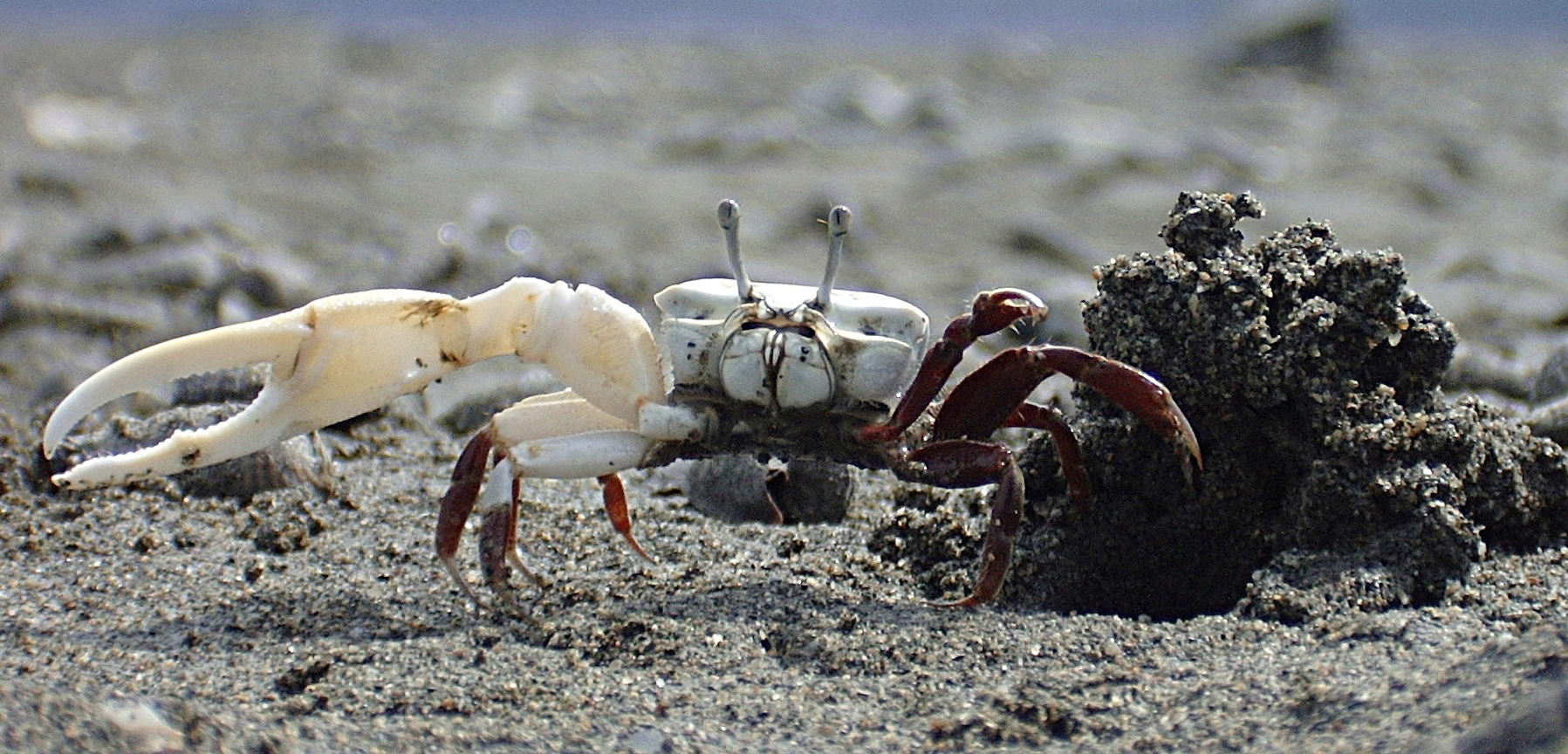Clawing Their Way to Victory
Research suggests fiddler crabs with regenerated claws have distinct fighting strategies.
Article body copy
Male fiddler crabs have one oversized claw, which they use to both attract females and to fight other males for the best breeding burrows on the beach. These fights can get violent, and crabs will sometimes lose their big fighting claw in the process. Fiddler crabs have the ability to regrow their claw, though the new one will never be as sturdy as the original, says Daisuke Muramatsu, a biologist at Kyoto University in Japan.
Even in their weakened state, the crabs must fight. Yet based on his new research, Muramatsu argues that fiddler crabs are more strategic fighters than we’ve given them credit for: he says they pick battles that account for their handicap, and use a strategy of bluff and counter-bluff to end disputes before they begin.
Muramatsu spent days observing crabs tussling on the beach near Wakayama in Japan. He divided the fights into three distinct stages: contact, which may involve some pushing and shoving; interlock, when they grasp each other’s claw in a vicious handshake; and fling, when they try to throw or flip their opponent.
Watching 138 fights, Muramatsu found that crabs with regenerated claws tend to engage in fights with opponents with smaller claws, or try to choose opponents whose major claw is on the opposite side, which makes it harder to get a grip and results in a less intense (and potentially less damaging) fight. He thinks this is a sign that the crabs are trying to protect their weakened limbs.
Crabs with regenerated claws also act more aggressively during the initial contact stage, bluffing in order to scare off opponents before the contest gets too dangerous, Muramatsu says.
“The crabs can change their behavior, their fighting tactics, after losing a claw,” says Muramatsu.
Crabs don’t seem to be able to tell when an opponent has a regenerated claw, says Muramatsu. But they do seem wise to the possibility of a bluff. Crabs with their original claws still intact will choose same-handed opponents and counter-bluff by persisting in the fight even when facing a larger adversary.
Judith Weis, a marine biologist from Rutgers University in New Jersey, is not convinced that regenerated claws are weaker than originals. “I wouldn’t be surprised if after the first molt it was weaker. But by the time it has molted several times to get back to its original size, there is no reason it would be weaker,” she says.
She also thinks Muramatsu and his colleagues may be reading too much into the crabs’ behavior with their ideas about the bluff and counter-bluff strategies. “They’re attributing more intelligence to crabs than I’ve ever observed,” she says.
Muramatsu doesn’t think this behavior can teach us much about crab cognition. Rather, he thinks the crabs have two fixed behaviors—protective bluffers, or aggressive counter-bluffers—and losing a claw causes them to switch from one to the other.

